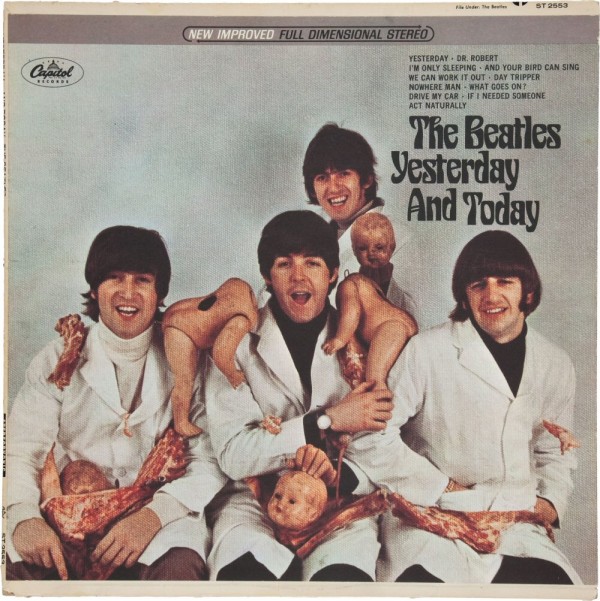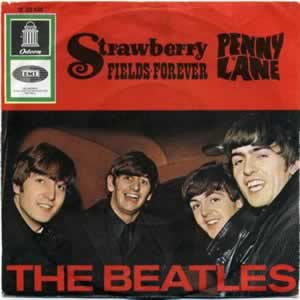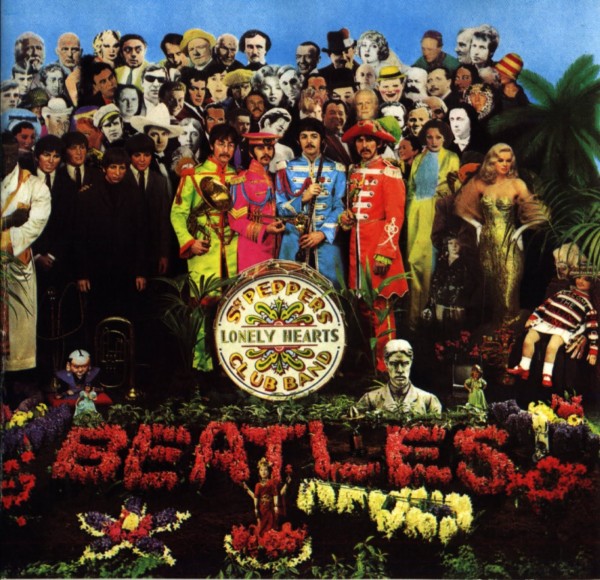Leading internet sources will tell you that Paul McCartney, composer and bassist of the Beatles, lived 18 June 1942-present. But if you believe the rumors, he actually died in 1966 and the present “Paul” is a lookalike. Some cite the “Frog Song” as evidence that he’s a different person to the one who wrote “Yesterday”, but as with most conspiracy theories, there’s more to it if you dig a little. According to some, there’s a wealth of evidence that Paul is dead. And so we present the Top 10 Signs that Paul McCartney Actually Died in 1966.
10. “The Walrus was Paul”

Here’s a bit of a disappointing one to start with – the clue comes from “Glass Onion” on the White Album, when John sings – “well here’s another clue for you all/The walrus was Paul”. Theorists got excited over the mention of Paul in the lyrics and rumors started flying that walrus was a Scandanavian word, meaning death. Unfortunately, a little digging reveals that the word is derived from the Old Norse “rosmhvalr”, which means…walrus. Sorry folks!
9. Billy Shears

This clue all ties in with the man that was said to have replaced Paul – William Shears Campbell, winner of the 1965 Paul lookalike competition. When the band are announcing the arrival of Billy Shears at the start of Sgt Pepper, they are actually introducing the new version of Paul. It’s also a bit of wordplay, as “Billy Shears” can be willfully misheard as “Billy’s here.”
Apparently, a picture of the real Billy (above) appears on the poster that was given away with the White Album, and he had plastic surgery to look more like the real Paul. Still, die-hard fans claim to notice differences between Paul and William, whom they christened “Faul”. Some even say that there is a 2-inch height difference and the color of his eyes has changed. As recently as 2010, things “Faul” said in interviews were still being picked apart for discrepancies.
8. Magical Mystery Tour Cover Art

An obscure one next, from the fittingly obscure Magical Mystery Tour EP. On the cover, the word “Beatles” is spelled out in stars, but if you put a mirror up to it, it comes up with a number – 2317438. What’s the significance of the number? It’s meant to be the telephone number of a London mortuary, but there’s no evidence that anyone ever called this number to find out.
The clues don’t end there though – there’s a cartoon of Paul, with a cracked head, labelled “The Fool on the Hill”. There’s a picture of all 4 Beatles where Paul is wearing a black carnation, and the others are wearing red. And then there’s a picture of Paul, sitting in front of a poster that says “I was”. Enough for you yet? Don’t worry, there’s more to come….
7. Revolution 9

This track from the White Album is largely inexplicable, with its strings of gibberish, strange noises and Yoko Ono droning “number 9” over and over again. But again it contains clues that point to Paul’s demise. Lyrics like “his voice was low and his eye was high and his eyes were closed” and “intended to die” are meant to refer to Paul, but the real giveaway is when you play it backwards. There’s the noise of a car crash, a scream and then the repeated phrase “turn me on dead man”. It seems there is some point to that track after all…
6. Lyrical Prophecy

A bit of a red herring next. Many conspiracy-theory sites list the lyric “I was alone I took a ride I didn’t know what I would find there” as another pointer, but the theory collapses under scrutiny. That line was taken from “Got to Get You Into My Life”, a track from Revolver (above). Revolver was released on 5 August 1966, a full 3 months and 4 days before Paul’s supposed accident. I think we can safely rule this one out, unless it was Paul singing about his own death. Now, that really would be spooky…
5. Yesterday and Today “Butcher Cover”

Now here’s a cover that provoked its own controversy. A product of a photo shoot with Robert Whitaker, this gruesome picture adorned a clumsily put-together compilation of Beatles’ tracks from various albums, aimed at the American market. When it was released in the US on 20 June 1966, the cover causes immediate outrage and new covers were sent out to stick over the old ones, featuring Paul in a trunk. A few years later both covers would be raked for clues, such as the decapitated head in Paul’s lap and the way that Paul seems to be in a coffin. There was only one problem. Have a look at the date of release again – yes, it’s another anachronism. Just a bad taste photoshoot after all!
4. “I Buried Paul”

Another clue which at least fits into the chronology, this derives from a murmur at the end of “Strawberry Fields Forever”, which was released as a double A-side in February 1968. It’s unclear what John Lennon is saying at the end, but it certainly sounds a bit like “I buried Paul”. Later, John would insist that the line was “cranberry sauce“. Sound unlikely? Bear in mind the original lyrics to “Yesterday” were “Scrambled eggs, oh my darling how I love your legs”. Suddenly, Lennon muttering about a condiment doesn’t seem anything out of the ordinary.
3. Linda Eastman

This was a cruel but plausible fan theory that points to Paul becoming Faul. Paul had been in a relationship with actress Jane Asher for 3 years prior to the “accident” and they were living together. Two years later he was marrying Linda Eastman, with the smallest of gaps in between women. Paul’s fans – who George referred to as the “Apple Scruffs” – were skeptical about his choice of bride and sneered at awkward Linda who had none of the poise of Jane. When Paul’s “death” was uncovered, many people took his change of personality as evidence that he wasn’t the same Paul who’d dated Jane. He also withdrew from London and spent time with his family and sheepdog on a remote Scottish farm. Case closed?
2. Abbey Rd Cover Art

The cover art of the Beatles’ last-recorded album is supposed to be blatant proof of Paul’s death. The iconic walk across the zebra crossing is meant to be Paul’s funeral procession, with George as scruffy denims as the gravedigger, barefoot Paul as the corpse, Ringo as the pallbearer in black, and all-white John as the preacher. Then it’s said that if you zoom in, a car license plate reads “28 IF” – 28 if Paul had lived. It can be argued that Paul would have been 27, not 28 in 1969 but Eastern religions include months spent in utero as part of someone’s age, and the Beatles were very involved in Eastern religion at the time. The first part of the license plate – “LMW” stood for “Linda McCartney weeps”. Probably the most famous set of clues, but not the most compelling.
1. Sgt Pepper’s Lonely Hearts Club Band Cover Art

The album that introduced Billy Shears was bound to be a treasure trove of visual clues, especially considering the famously complicated cover art. Some “clues” are more convincing than others, but there are a lot of them. A floral wreath spells out “Beatles” with a bass guitar with only three tuning pegs, indicating that only three Beatles were left alive. There’s an open palm behind Paul’s head – a symbol of death in some societies- and a tiny Aston Martin, representing the car he was driving in the apparent crash. There’s a picture of the four early Beatles, and they seem to be looking into a grave. Meanwhile, inside Paul wears an armband with the initials OPD – said to stand for “officially pronounced dead” – and on the back, Paul faces backwards and George’s thumb points to the line “Wednesday morning at five o’clock as the day begins” which is supposed to be the time of the accident.
But it’s the disc itself which is said to hold the greatest clue – if you hold a mirror along the drum in its center, a message appears, reading “I ONE IX HE DIE”. It’s been interpreted as meaning “ 1 1 9 he die”, or 11 November, the date the accident is meant to have happened. Other people have interpreted it as “1”, “ONE” and “I” referring to the three remaining Beatles, and the X representing the dead Paul. The lyrics of the album were dissected too, until the full theory arose, involving Paul, a car, an early morning drive and a girl called Rita. It may not be true, but the conspiracy theorists certainly did a good job of making you wonder….